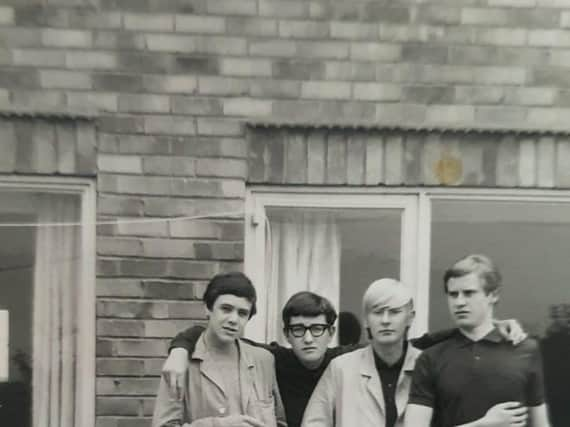Former Advertiser reporter remembers Wilf, the Rugby lad with very distinctive hair


Even by the standards of the 1960s, Ian Wilson’s hair was something else.
This wasn’t just because like so many Rugby lads of his generation Ian – or ‘Wilf’ as he was more generally known – wore his crowning glory in the Beatle fashion, brushed forward without a hint of Brylcreem.
Advertisement
Hide AdAdvertisement
Hide AdNo. What stood out was the colour of Wilf’s topknot. His thatch was so fair that it bordered on white.
Had he been born a woman it would undoubtedly have been termed ash blond. But make no mistake, although Wilf was mainly a laid-back kind of guy, he certainly knew how to look after himself should the need arise.
I readily recall him taking on a far bigger adversary one night outside the Il Cadore in Chapel Street. Not a particularly pleasant spectacle, but boys always will be boys, after all.
It must have been more than half a century since I last saw Wilf and so was saddened to learn of his death in May. I saw the announcement of his passing in the online section for Advertiser obituaries and knew at once it must be him.
Advertisement
Hide AdAdvertisement
Hide AdNot so long ago, former ‘Tiser photographer Paul Turner wrote to me from his home in Austria. He knows Wilf’s sister Emma, who had been in touch to say that her brother thoroughly enjoyed my articles and, in the final stages of his life, had the pieces read to him.
Of course, I was greatly flattered to hear this, although much preferring to hear that Wilf had not been in such a predicament at the time. He would certainly have recognised a lot of my recollections.
The picture at the top of this page was sent to me by Paul Turner and there are no prizes for correctly identifying Wilf. The lad on the left is John Ashmore and on the right we have – I think – Johnny Reed.
Forgive me if I’m mistaken here. The other boy is very familiar, but I just can’t remember his name. It’s been a long time, after all.
Advertisement
Hide AdAdvertisement
Hide AdHowever, the Lambretta scooter possibly belonged to Wilf as I do know that Johnny Reed rode a Vespa. John Ashmore didn’t bother with two wheels all that much, if my memory serves me correctly, and went directly to the more comfortable four-wheeled variety of transport.
Wilf’s father was the unusually named Over Wilson and he ran the Black Horse in Castle Street. The last time I visited Rugby and dropped by my old haunts the place was boarded up, a pub no more. Yet in its heyday, this was a popular watering hole for Rugby Advertiser printers.
I vividly remember calling in just before my first Christmas on the ‘Tiser in 1965 and ordering a vodka and orange. I thought I was being very grown-up at the time, although I really shouldn’t have been there at all, being aged just 16.
It’s entirely possible that I was en route to the Brotherhood Hall just over the road, which used to run ‘beat dances’ every week around that time. In fact, one particular gig has stuck in my mind – the memorable night the former Liberators and newly renamed Pinkerton’s Assorted Colours played there.
Advertisement
Hide AdAdvertisement
Hide AdPinkerton’s front man Sam Kemp really knew how to work a crowd, usually ending his announcement of the next number on the set list with his trademark laid-back “I hope you like it…”
The Castle Street area was alive with activity on those days, what with the Advertiser works – now Wetherspoon’s Rupert Brooke – and the Venture Café, which was a much-favoured lunchtime destination for the paper’s reporters and printers.
Miraculously, despite the educational apartheid of the time, almost everyone rubbed along just fine during the 1960s. Many people’s life chances were dictated by the 11-plus exam, and I understand that Warwickshire still has this selective system in place.
But whether it was Murray, Newbold High, Dunsmore, Rugby High School or Lawrence Sheriff, I would be hard-pressed to dredge up any memories of any animosity being displayed.
Advertisement
Hide AdAdvertisement
Hide AdThe fact was that we were all youngsters together back then, with no foreign fields in which to suffer and die, with hope in our hearts, and money in our pockets.
Wilf was aged 71 when he received the call from the man upstairs, having just slightly exceeded his Biblical allocation of three-score years and ten.
But without any shadow of a doubt, he will always be immortal to those who knew and loved him.
After all, who could possibly forget that ash blond mop top of his?
John Phillpott’s account of his days on the Rugby Advertiser, Go and Make the Tea, Boy! was published this summer and is available from the usual outlets.